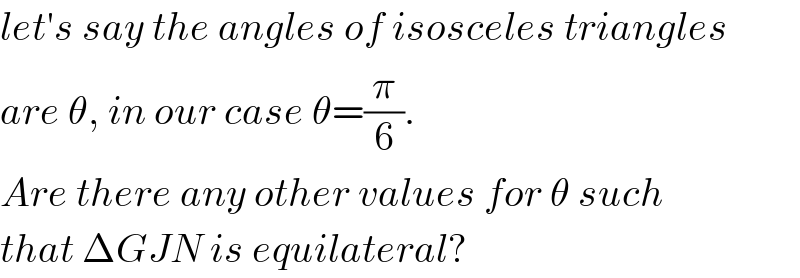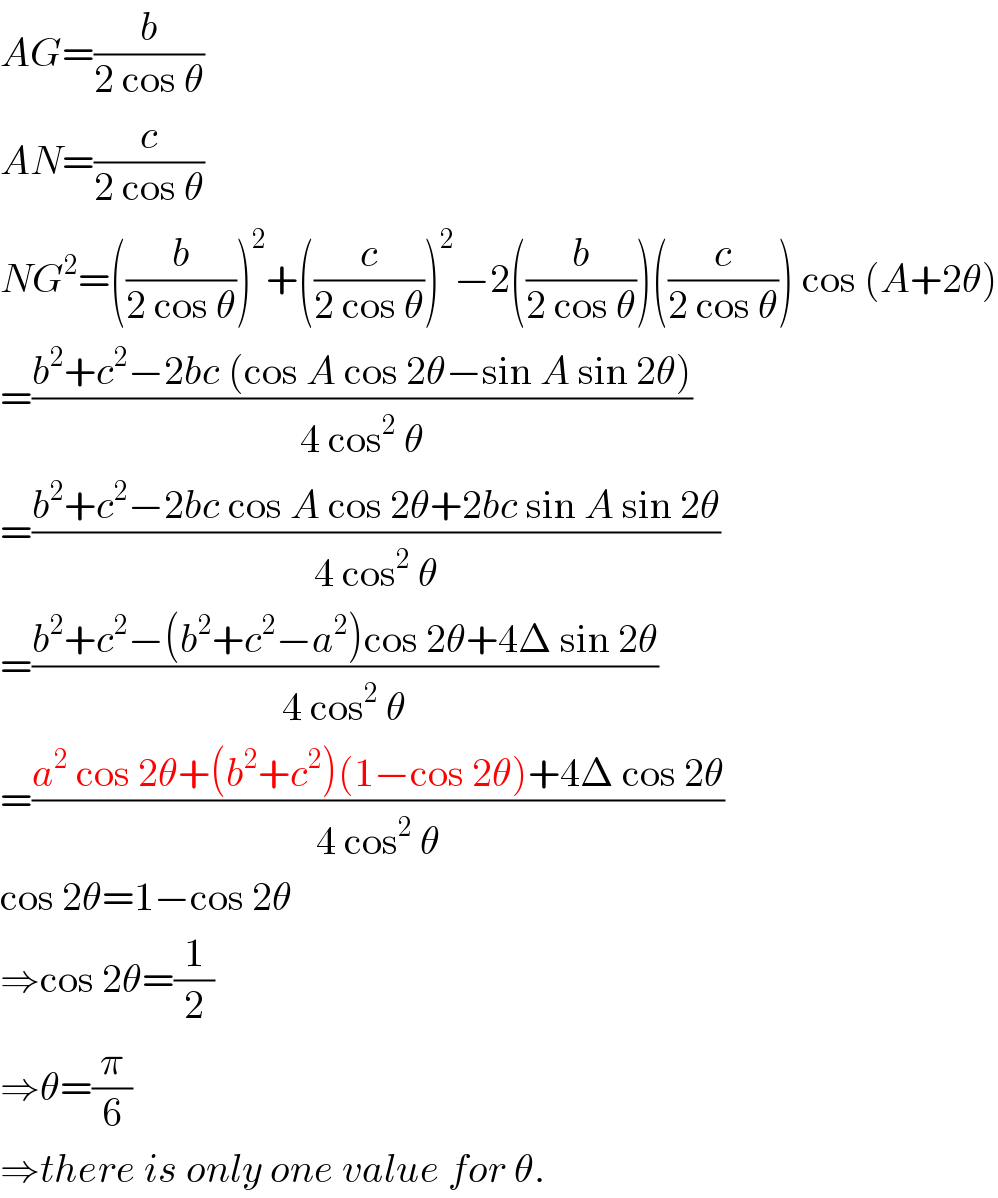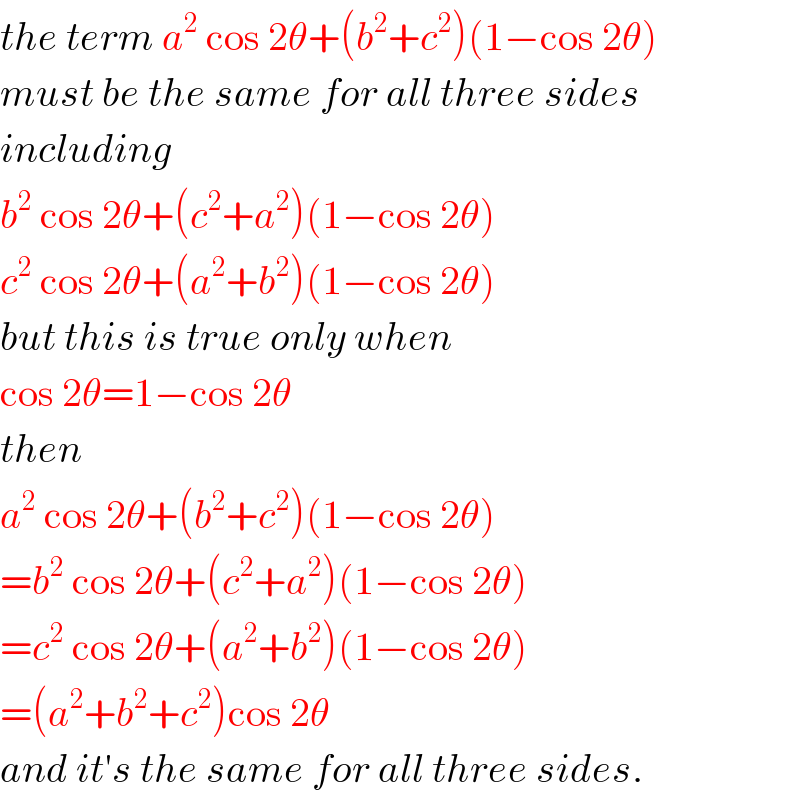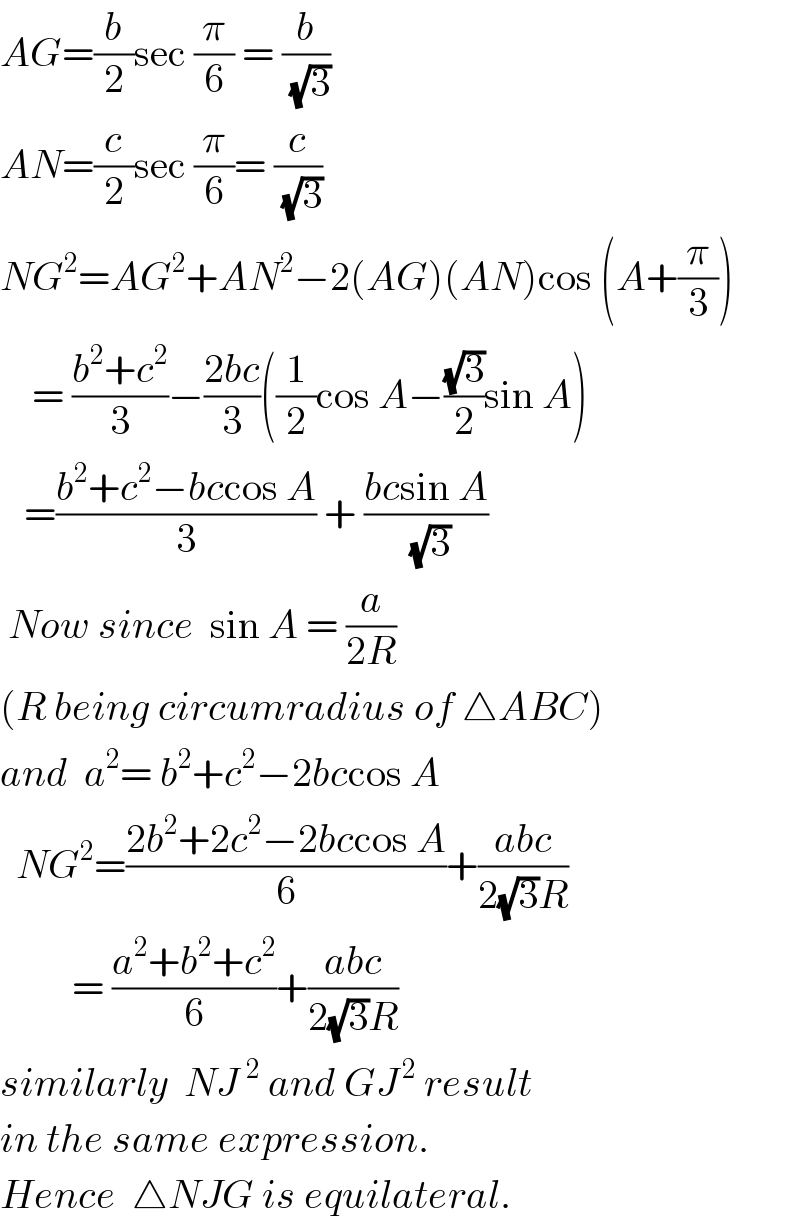
Question and Answers Forum
Question Number 39404 by ajfour last updated on 06/Jul/18

Commented by ajfour last updated on 06/Jul/18

Commented by MrW3 last updated on 06/Jul/18

Commented by behi83417@gmail.com last updated on 06/Jul/18
![AG=(b/2)secθ,AN=(c/2)secθ NG^2 =(b^2 /4)sec^2 θ+(c^2 /4)sec^2 θ−((bc)/2)sec^2 θ.cos(60+2θ)= =(1/4)sec^2 θ[b^2 +c^2 −2bc.cos(60+2θ)] NJ^2 =(1/4)sec^2 θ[a^2 +c^2 −2ac.cos(60+2θ)] ⇒a^2 +c^2 −2ac.cos(60+2θ)=b^2 +c^2 −2bc.cos(60+2θ) ⇒a^2 −b^2 =2c(a−b)cos(60+2θ) ⇒^(a≠b) cos(60+2θ)=((a+b)/(2c)) ⇒θ=(1/2)cos^(−1) [((a+b)/(2c))]−30 .](Q39424.png)
Commented by MrW3 last updated on 06/Jul/18

Commented by ajfour last updated on 06/Jul/18

Commented by behi83417@gmail.com last updated on 06/Jul/18

Commented by MrW3 last updated on 06/Jul/18

Answered by ajfour last updated on 06/Jul/18

Commented by behi83417@gmail.com last updated on 06/Jul/18

